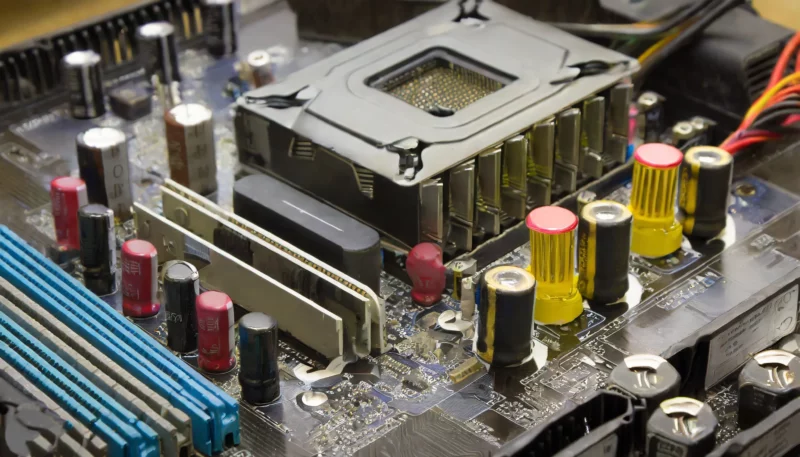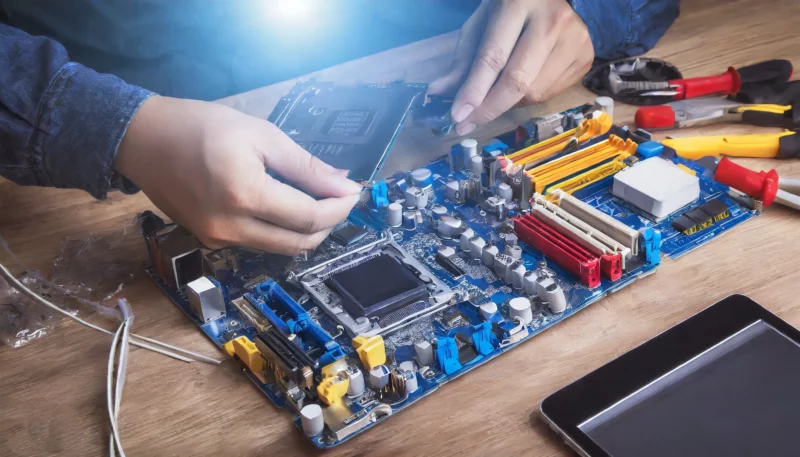In the vast landscape of computer components, the ATX motherboard stands as a cornerstone, orchestrating the connectivity and functionality of your system. What is an ATX motherboard, and why is it a pivotal choice for many enthusiasts? In this detailed guide, we explore the essence of ATX motherboards, ranging from sizes and differences to their applications and benefits.
What Is an ATX Motherboard?
ATX, or Advanced Technology extended, is a motherboard form factor, defining the physical dimensions, layout, and power supply placement. Developed by Intel, the ATX standard has become the industry norm, offering a versatile foundation for various computers builds.
What Is ATX Motherboard Size?
The standard ATX motherboard size is 12 inches by 9.6 inches (305 mm x 244 mm). This size provides ample space for expansion slots, connectors, and components, making it suitable for a wide range of applications, from gaming rigs to professional workstations.
What Does the ATX Mean in the Motherboard?
ATX, as mentioned earlier, stands for Advanced Technology extended. This naming signifies the enhanced capabilities and features introduced by the ATX standard, setting it apart from its predecessors.

What Is a Micro ATX Motherboard?
Micro ATX, or mATX, is a smaller form factor derived from the ATX standard. The Micro ATX motherboard size is 9.6 inches by 9.6 inches (244 mm x 244 mm), offering a more compact solution while still supporting a considerable number of components.
What Is the Difference Between ATX and Micro ATX?
- Size: The primary distinction lies in size, with Micro ATX being more compact.
- Expansion Slots: ATX typically has more expansion slots than Micro ATX.
- RAM Slots: ATX motherboards often have more RAM slots for memory expansion.
- Power Supply: ATX and Micro ATX motherboards may have different power supply placements.
What Are the Applications That ATX Motherboards Use?
- Gaming Rigs: ATX motherboards are popular in gaming setups due to their ability to support multiple graphics cards and peripherals.
- Workstations: Professionals often opt for ATX motherboards for their expansive connectivity and reliability.
- Multimedia Editing: The versatility of ATX makes it suitable for multimedia editing, where powerful hardware is crucial.

4 Benefits of ATX Motherboard
- Expansion Slots: ATX motherboards provide more PCIe slots, accommodating multiple graphics cards, storage solutions, and other expansion cards.
- Robust Cooling Solutions: The larger size allows for efficient cooling solutions, including multiple fan placements and liquid cooling options.
- Compatibility and Availability: ATX components are widely available, making it easy to find compatible parts for your build.
- Enhanced Power Delivery: ATX motherboards often feature robust power delivery systems, supporting high-performance CPUs and GPUs.
The ATX standard has evolved, giving rise to variations like Extended ATX (EATX) and Flex ATX to accommodate different needs. These variations offer additional features, increased size, or enhanced power delivery for specific applications.
The standard size of an ATX motherboard is 12 inches by 9.6 inches (305 mm x 244 mm).
The primary differences include size, expansion slots, RAM slots, and power supply placement.
Different ATX form factors, such as EATX and Flex ATX, cater to specific needs, offering additional features or increased size.
ATX motherboards offer versatility, more expansion options, efficient cooling solutions, and wide compatibility with components.
ATX motherboards are commonly used in gaming rigs, workstations, and multimedia editing setups due to their versatility and performance capabilities.
Yes, ATX motherboards typically have more PCIe slots, making them suitable for configurations with multiple graphics cards.

